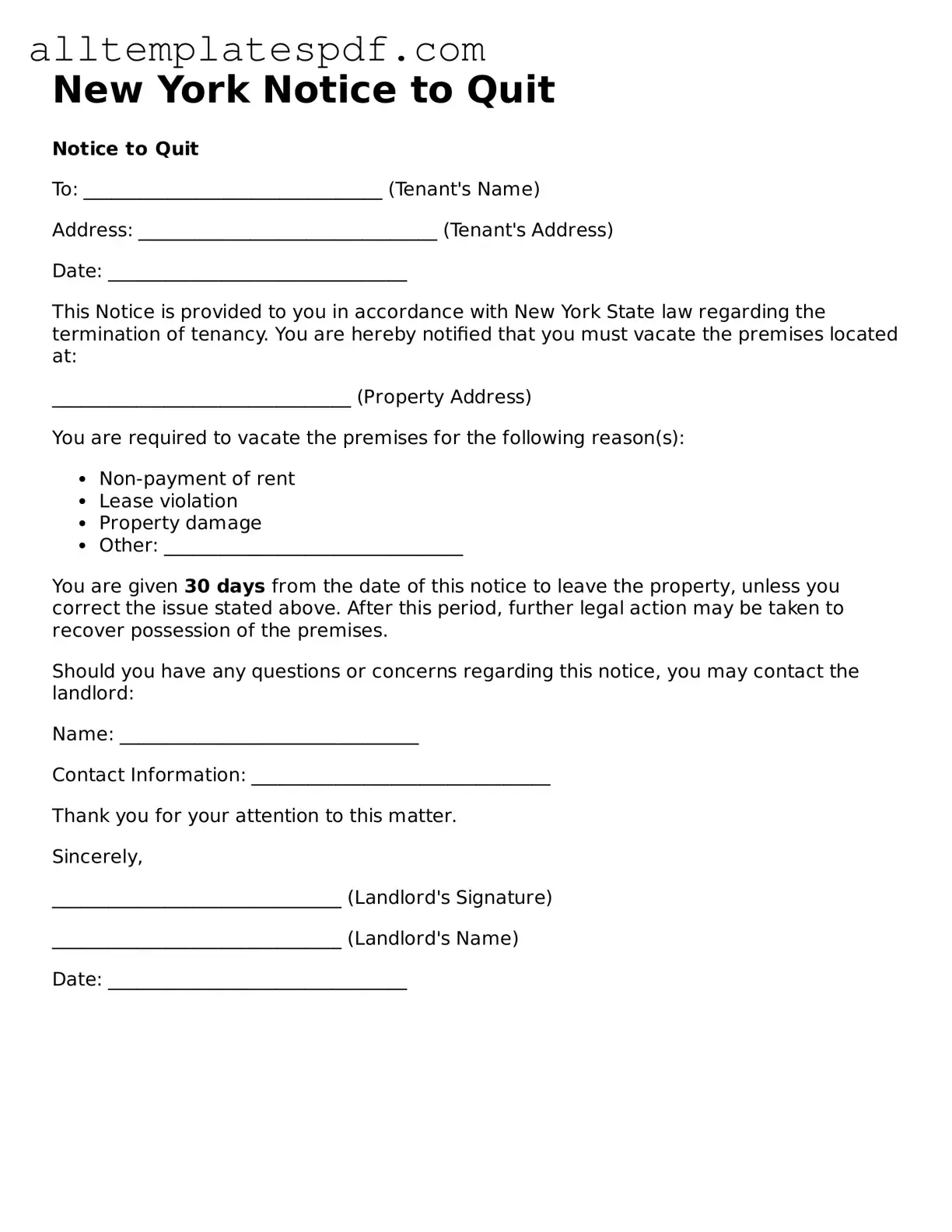Filling out the New York Notice to Quit form can be a straightforward process, but many people make common mistakes that can lead to delays or complications. Understanding these pitfalls is crucial for ensuring the form is completed correctly and serves its intended purpose.
One frequent error is failing to provide accurate tenant information. The form requires the full name of the tenant and the address of the rental property. Omitting any details or misspelling names can create confusion and may invalidate the notice.
Another mistake is not specifying the reason for the eviction. In New York, a Notice to Quit should clearly state why the landlord is seeking to terminate the tenancy. Whether it’s for non-payment of rent or lease violations, clarity is essential. Without a clear reason, the notice may be deemed insufficient.
Many people also overlook the importance of including the correct date. The date on the notice is crucial as it marks the beginning of the notice period. If the date is incorrect, it could lead to a situation where the tenant believes they have more time to vacate the premises than they actually do.
Additionally, some individuals forget to sign the notice. A signature is not just a formality; it confirms that the landlord is the one initiating the eviction process. Without a signature, the notice may not hold up in court.
Another common oversight is not providing the tenant with a copy of the notice. It’s essential to deliver the notice in a manner that ensures the tenant receives it. This could be through personal delivery, certified mail, or other methods that provide proof of receipt.
People often fail to adhere to the required notice period. New York law specifies how much time a tenant must be given to vacate, depending on the reason for eviction. Ignoring these timeframes can lead to legal complications and may prolong the eviction process.
Some landlords mistakenly use outdated forms. Legal documents can change, and using an old version of the Notice to Quit could result in non-compliance with current laws. Always ensure that the most recent form is being used.
In addition, neglecting to keep a copy of the notice for personal records is a common error. Having a copy can be invaluable if disputes arise later. It serves as evidence that the notice was indeed issued and can help in court proceedings if necessary.
Lastly, people sometimes underestimate the importance of consulting with a legal professional. While filling out the form may seem simple, understanding the broader implications of eviction laws is vital. Seeking advice can prevent costly mistakes and ensure that the process goes smoothly.
By being aware of these common mistakes, landlords can navigate the eviction process more effectively and minimize potential issues. Taking the time to fill out the New York Notice to Quit form correctly is a crucial step in protecting one's rights and ensuring compliance with the law.
